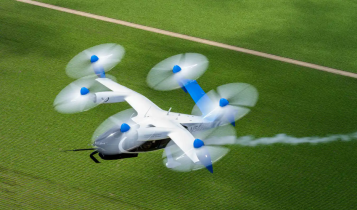Is it Time to Book a Hydrogen-Electric Flight—SFO to SAN?
This is cool in a terrifying way. Joby’s hydrogen-electric demonstrator aircraft made a 523-mile flight above Marina, CA. There were no emissions except for water.

Joby’s battery-electric air taxi development demonstrates hydrogen’s ability for emissions-free regional trips that don’t need a runway. The aircraft takes off and lands vertically.
According to JoeBen Bevirt, Joby CEO and Founder, “Imagine being able to fly from San Francisco to San Diego, Boston to Baltimore, or Nashville to New Orleans without the need to go to an airport and with no emissions except water. That world is closer than ever, and the progress we’ve made towards certifying the battery-electric version of our aircraft gives us a great head start as we look ahead to making hydrogen-electric flight a reality.”
The company expects to use the same landing pads, operations team, and ElevateOS software to support the aircraft’s commercial operation. The aircraft landed with 10% of its hydrogen fuel load after the test flight, showing the technology’s efficiency.
As cool as this sounds, I have questions and fears. Headlines are filled with reports of commercial airlines near collisions. Is 10% of its fuel remaining enough of a cushion? What are the expected costs? Won’t the skies be really crowded (have you flown into San Francisco lately)? While it sounds like a lot of upside, what are the challenges that remain?
What are the safety assurances/rules/licenses involved in the H2FLY project? Joby plans to begin commercial air-taxi flights as early as 2025. The demonstrator is part of its future technology program, but 2025 is just around the proverbial corner. Joby recently acquired Xwing, Inc., a developer of aviation autonomous technology. Xwing boasts 250 fully autonomous flights and 500 auto landings so far based on its proprietary Superpilot software. The project involves collaboration between a team at Joby and H2FLY, the company’s wholly-owned subsidiary in Stuttgart, Germany.
To me, this seems more in line with defense or rescue applications than everyday commercial regional city hopping. I think I’ll leave bragging rights to others for a few years. Wasn’t the Hindenburg fueled by hydrogen?

